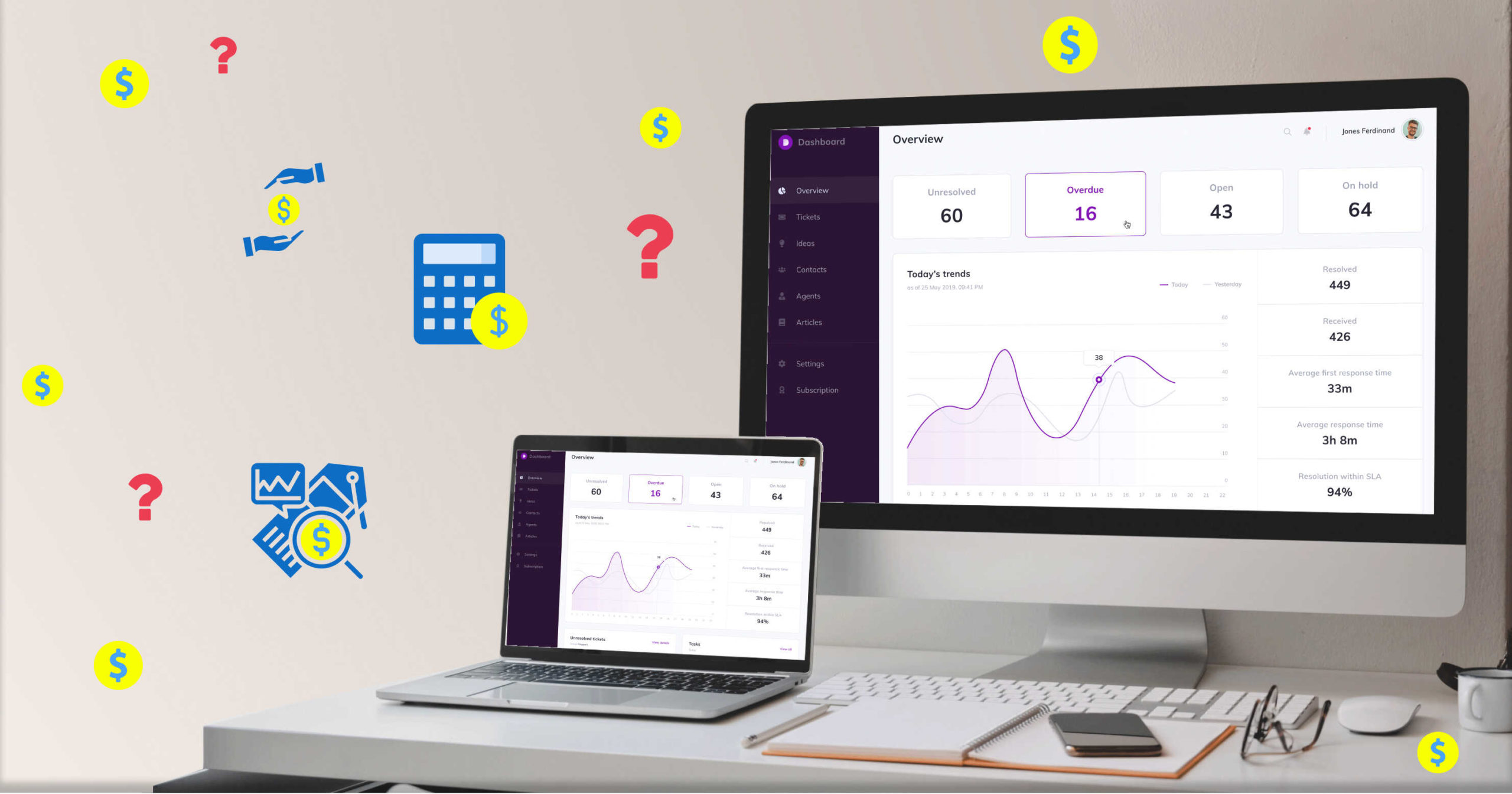Before making a choice between Fixed Price vs. Hourly Rate let’s decide the comparison criteria.
Here they are:
- Total development cost
- Reaction on changes in the development plan
- Product quality and competitiveness
Let’s look at the Fixed Price and Hourly Rate options using a simple application for submitting support tickets.
Total development cost
When developing a web application, the developer company calculates its costs based on the amount of time it takes to create the product.
In our case the staff will be:
- 1 programmer for the Server-Side Development — 30$ / hour (SSD)
- 1 programmer for the Client-Side Development 30$ / hour (CSD)
- QA — 20$/hour (QA)
- project manager — 30$/hour (PM)
Fixed price: The company calculates the number of people needed for development, takes into account the cost of an hour of their work, the complexity of the project, takes some money. stock.
Thus, the more accurate the terms of reference, the more accurate the project calculation will be.
In our case the hours required for this app will be:
- SSD — 40 hours
- CSD — 40 hours
- QA — 10 hours
- PM — 10 hours
Coef. of the risks — 1.5…. This indicator is different for all companies.
Totaly, 2900$ (100 hours)
With Coef.of the risks — 2900 * 1.5 = 4350$ (150 hours)
Hourly: used methodology agile, scrum. According to which you plan the project 1-2 weeks in advance. After this time, you get a part of a workable product, which you can already look at, use, ask the developers to change something. This approach allows you to very quickly present your product to the market.
Development continues until the product is completed. The customer can decide at any time to stop or change the development requirements.
Real-time wasted:
- SSD — 60 hours (client’s server was not standard and took longer to set up)
- CSD — 35 hours (turned out a little faster)
- QA — 16 hours (slightly more than planned)
- PM — 8 hours
Totaly, 3410$ (115 hours).
As you can see, specifically in this example, with the correct terms of reference, that for a simple application, hourly pay is a more suitable option.
Reaction on changes in the development plan (something went wrong, needs to be redone)
When it can happen:
- The project does not have what the customer thought would be added by default
- The product was not what it was intended
- When customer trying to sell a product, they don’t buy it
- Customer’s clients asked to add functionality
- During the development, there were problems with the implementation (some modules do not work as intended).
Fixed price: not reworked if not specified in the contract. these are additional costs. In this case, changes are calculated and added at a separate cost.
If the customer does not have a complete understanding of the picture of the project or he has conveyed it incorrectly, there is a risk of getting a product that is unnecessary for the market, which will not pay off.
Hourly: Changes can be made immediately without prior approval and agreement. This allows the product to be adapted to market conditions faster.
It is very important to mention the size and complexity of the project here. If there are not many changes in our small, that in large projects changes affect the rest of the functionality, which sometimes increases the development time several times.
During development, there were problems with the implementation (some modules do not work as intended)
Today the developer writes 30% of the project code. The rest is a set of ready-made solutions that sometimes cannot work together. It is impossible to know all the combinations.
In this case, at a fixed price, the developer redesigns it at its own expense. When hourly — a decision is made on the need for this module in the project. The module is either replaced or removed from the project.
Product quality and competitiveness
Fixed price: high quality and competitiveness are possible with very competent planning and high qualifications of the customer. As a rule, in this case, there is a technical expert on the customer’s side.
Hourly: the quality is always high because the product is constantly adapting to market conditions. Also, in this case, developers can themselves propose to use new technologies and solutions that have appeared in the development process. Your product keeps pace with the times.
What should you choose?
If you have a complete understanding of how the product will work and the development time is less than 2-4 weeks, a fixed price is an excellent choice.
If the development period is longer, most likely you will not be able to think through everything. In this case, hourly would be your best bet.
If this is your first WEB app project. It is better to use hourly, having previously requested the estimated cost of development from the developer company.




 Resource development
Resource development